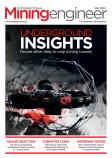Making the working environment safe in engineering sectors like mining, oil and gas and process engineering will maximise productivity and minimise the risk of accidents, writes Christopher Latter from SA Equip. That's good for organisations and everyone who works in them. It's a tough job, but there is technology that is specifically designed to minimise the risks associated with extreme working environments.
There are also various best practice guidelines to follow which will help with workplace safety. The engineering space doesn't have to be one filled with hazards, so long as you take the right precautions.
Starting with the safety foundations
At a fundamental level, you need to be operating in compliance with the necessary health and safety standards. Pay attention to the details, and don't take any shortcuts. Part of this is usually about identifying hazards and informing employees and providing them with the right training to carry out their work safely. These are the foundation of keeping a mining site or oil rig safe, and should be monitored and revised continuously to ensure safety is at an optimal level at all times.
Performing a risk assessment is key to identifying hazards, but once they have been logged, how do you address them? This is where technology comes in. One of the common hazards of the engineering space is low light in areas of operations. This is further complicated by the fact that the atmospheres in these areas can contain hazards like flammable gases. To illuminate these kinds of spaces, you need appropriate EX lighting that doesn't pose the risk of igniting such gases. Portable Atex Lighting is the perfect solution, as it can be easily positioned and rigged on-site in even the most hazardous work environments.
This type of technology is just one example of what's available to help make hazardous environments safer. The Health and Safety Executive (HSE) reported that in 2012/13 the major injury rate for workers on offshore oil rigs stood at 147.8 per 100,000 workers, which highlights the need for as many safety measures as possible in these environments.
The safety bottom line
It starts with regulatory compliance and adequate safety training of all workers, but having safe, effective equipment on-site is key to workplace safety in the engineering space. Explore options for EX equipment and setups that will provide tools, power, lighting and other resources that won't increase the risk of accidents.
It's no secret that there are hazards associated with the work of mining engineers, process engineers, oil & gas engineers and the like. It is the responsibility of organisations to do all they can to minimise those risks.
Click here to read about dropped object hazards.





















